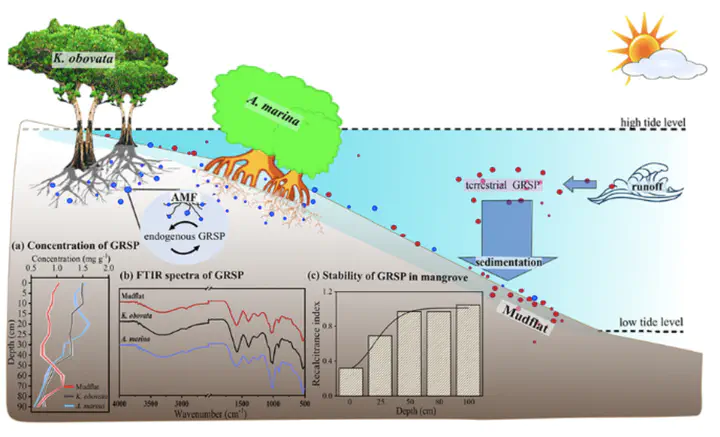6. Spatial heterogeneity in chemical composition and stability of glomalin-related soil protein in the coastal wetlands

Abstract
GRSP is widely distributed in coastal wetlands, and there is a tendency for it to degrade with increasing burial depth. However, the dynamic changes in the chemical composition and stability of GRSP during the burial process are still unclear. The purpose of this study is to clarify the chemical composition and accumulation characteristics of GRSP during the burial process in the Zhangjiang estuary. In a field study, soil cores to the depth of 100 cm were collected in the estuary from mangrove forests dominated by Kandelia obovata and Avicennia marina, and from mudflat. The results showed that the concentration of GRSP in mangrove forest soil was significantly higher than that in the mudflat (p < 0.05), and the C/N ratio of GRSP increased with depth at all sites. Analysis of Fourier transform infrared (FTIR) data showed that the degradation rates of the GRSP’s compositions varied with increasing burial depth, with microbial action and pH possibly being the main factors affecting degradation. Values of recalcitrance index (RI) showed that the stability of GRSP increased with increasing depth, and the contribution of GRSP to soil organic carbon (SOC) also increased. This suggests that the burial process plays a role in screening and storing the stable components of GRSP. Overall, our findings suggest that the concentration and chemical composition of GRSP vary dynamically according to habitat and burial processes. In addition, the improved stability of GRSP could contribute to carbon sequestration in coastal wetlands.